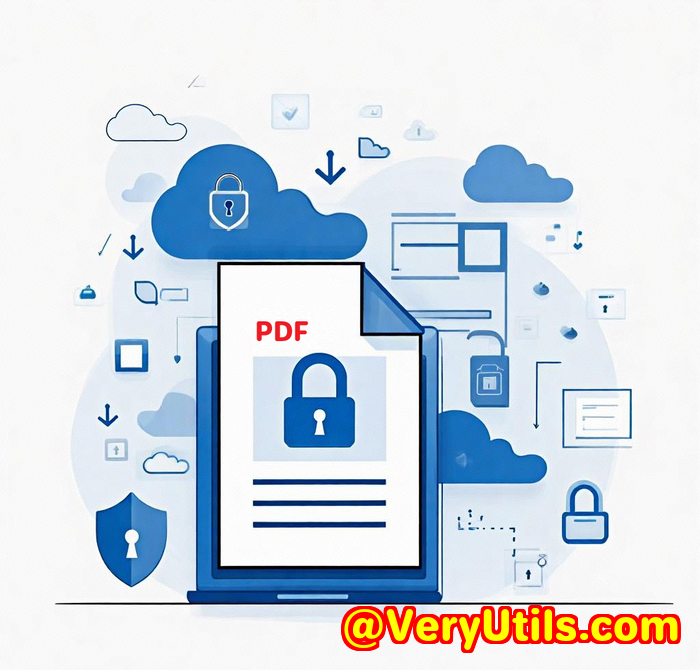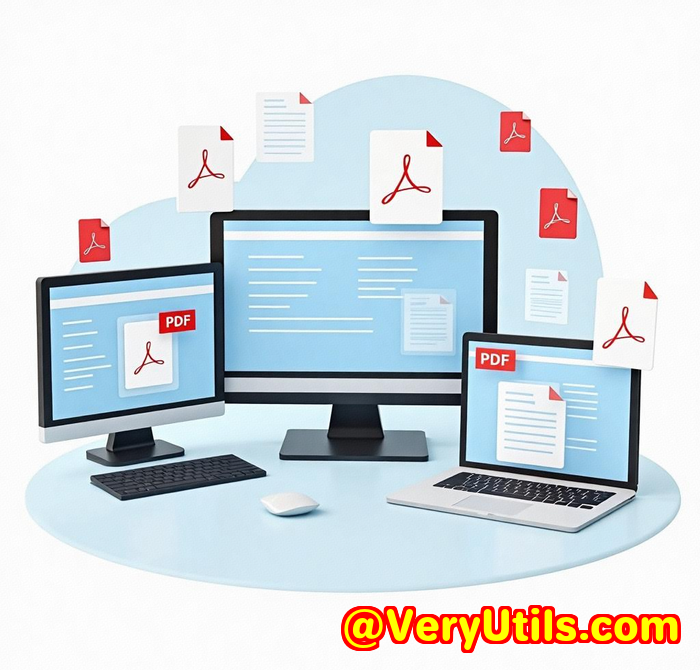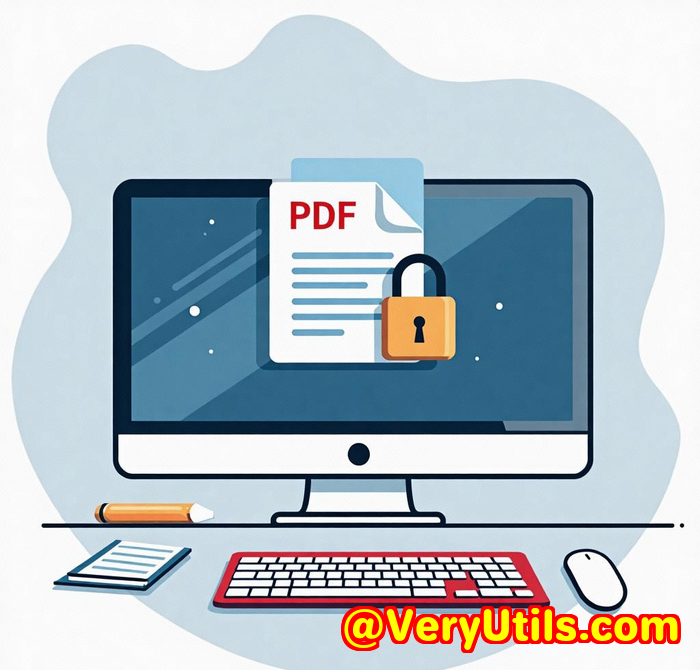How to Use VeryPDF DRM Protector for Secure File Sharing and Content Distribution in Education
How to Use VeryPDF DRM Protector for Secure File Sharing and Content Distribution in Education
In the world of education and training, digital content is king. But with that power comes risk. We've all heard stories of valuable course materials being copied, pirated, or shared without permission. It's a headache, right? Especially when you've invested so much time creating and curating that content. So, what's the solution? How do you protect your intellectual property (IP) and make sure it gets into the right hands without risking unauthorized sharing?

That's where VeryPDF DRM Protector comes into play. As someone who's worked in the e-learning space for a while, I can tell you, the importance of securing educational materials can't be overstated. If you're dealing with eBooks, videos, or even online courses, you need a way to ensure your content isn't going to be copied, downloaded, or shared inappropriately.
I've had the chance to dive into VeryPDF DRM Protector for Education and Training, and let me tell you it's a game-changer. In this post, I'll walk you through how this tool works and why it's perfect for anyone in education or training who needs to protect their digital content.
What Is VeryPDF DRM Protector?
At its core, VeryPDF DRM Protector is a digital rights management (DRM) tool designed to protect a variety of digital content, including eBooks, videos, training manuals, and more. It allows educators, course creators, and businesses to safeguard their intellectual property, ensuring only authorised users can access their content.
This is crucial in today's digital age where piracy, content theft, and unapproved sharing are rampant. And let's face it, as much as we want to trust people, we know the risks are out there.
Key Features of VeryPDF DRM Protector
-
AES Encryption for Maximum Security
Every file you protect with VeryPDF DRM Protector is encrypted using AES-128 encryption, which means your content stays secure no matter where it's being accessed.
-
Custom Permissions for Different Users
You can set specific permissions for each user or user group. Want to prevent someone from downloading, printing, or sharing your eBook? You can do that. Need to restrict access by IP address or country? No problem.
-
Advanced Analytics and Tracking
The tool offers real-time tracking, so you can see exactly who is accessing your content, when, and from where. This feature helped me immensely when I needed to know how my content was performing and if any users were experiencing issues.
-
Seamless Integration with LMS and Other Systems
One of the standout features is how easy it is to integrate VeryPDF DRM Protector with your Learning Management System (LMS) or eCommerce platform. Whether you're using Moodle, Canvas, or even a custom-built LMS, you can connect your content without any headaches.
-
Watermarking and Expiry Dates
Watermarks are a great way to track your content's journey. VeryPDF DRM Protector allows you to add personalised watermarks to your content to help identify where it came from. Plus, you can set expiry dates or device limits to ensure that users only have access for a certain time.
Real-Life Scenario: How I Use VeryPDF DRM Protector
Let's put this in perspective. Imagine you've spent months designing an in-depth course on data analysis for university students. You've got video lectures, PDFs of study materials, and quizzes. You've poured your expertise into every part of the course.
But what if someone shares your course materials with a bunch of students who didn't pay for it? Or worse, what if someone downloads your videos, uploads them to a file-sharing site, and starts profiting off your hard work?
I've been there, and that's exactly why I turned to VeryPDF DRM Protector. It gave me peace of mind knowing that my materials were protected.
Here's what I love about the tool:
-
No Downloading or Printing I didn't want students downloading or printing the content, so I turned off those features. It was one less thing to worry about.
-
Analytics The tracking feature was a game-changer. I could see who was viewing what content, and even track errors when someone had trouble accessing materials.
-
Custom Permissions I could set up different levels of access for instructors, students, and even guest users, making sure the right people had the right access.
Why VeryPDF DRM Protector is a Must-Have for Educational Content Creators
When I first started using digital content protection, I tried a few different tools. Some were too complicated. Others were too expensive or didn't have the customisation I needed. But VeryPDF DRM Protector hits the sweet spot with a user-friendly interface, powerful features, and a price that makes sense for small to medium-sized educational organisations.
If you're distributing content like eBooks, online courses, training materials, or videos, here's why you should consider using VeryPDF DRM Protector:
-
Comprehensive Protection It secures your eBooks, videos, training guides, and more with military-grade encryption.
-
Customised Control You can apply specific restrictions like device limits, print limits, and more, depending on the needs of your audience.
-
Seamless Integration Easily integrate with your LMS, eCommerce platform, or any other business system.
-
User-Friendly Interface The setup is smooth, and you won't have to spend hours learning how to use it.
Conclusion
Protecting your digital content is crucial, especially in the education and training space where content theft can undermine the hard work you've put in. VeryPDF DRM Protector provides a robust, scalable solution to ensure your materials are secure and only accessible to the people who need them.
I highly recommend it to anyone in the education or training industry who's looking to protect their valuable intellectual property. Whether you're a university professor, a corporate trainer, or a small business owner offering online courses, VeryPDF DRM Protector is your digital bodyguard.
Start protecting your content today visit VeryPDF DRM Protector and see how it can safeguard your digital assets.
Custom Development Services by VeryPDF
If you need a tailored solution for your specific content protection requirements, VeryPDF offers custom development services to meet your unique technical needs. Whether you're dealing with content protection for eBooks, training videos, or even other formats, VeryPDF can develop solutions based on your preferred technology stack.
Their expertise spans across various platforms like Python, PHP, C++, Java, and more, and they offer seamless integration with various systems such as LMS, CRM, and eCommerce solutions. Whether it's securing content or automating workflows, VeryPDF has you covered.
To learn more about how VeryPDF can help you, visit their support centre at support.verypdf.com.
FAQs
Q: Can I protect both eBooks and videos with VeryPDF DRM Protector?
A: Absolutely! You can protect a wide range of content, including eBooks, videos, audio, and documents.
Q: Do students need to install any plugins to access content?
A: No, VeryPDF DRM Protector works seamlessly in any modern browser, so students won't need to install any plugins.
Q: Can I track who is accessing my content?
A: Yes, you can track detailed analytics on who accesses your content, when, and from where.
Q: Is offline access possible for protected content?
A: Students can access documents, images, and audio offline, but videos require an internet connection as they are streamed online.
Q: Can I integrate with my LMS?
A: Yes, VeryPDF DRM Protector integrates easily with most Learning Management Systems (LMS) through REST APIs.
Tags/Keywords
-
DRM for Education
-
Protect Course Materials
-
Digital Rights Management for Training
-
eBook Protection
-
Secure Content Distribution in Education



